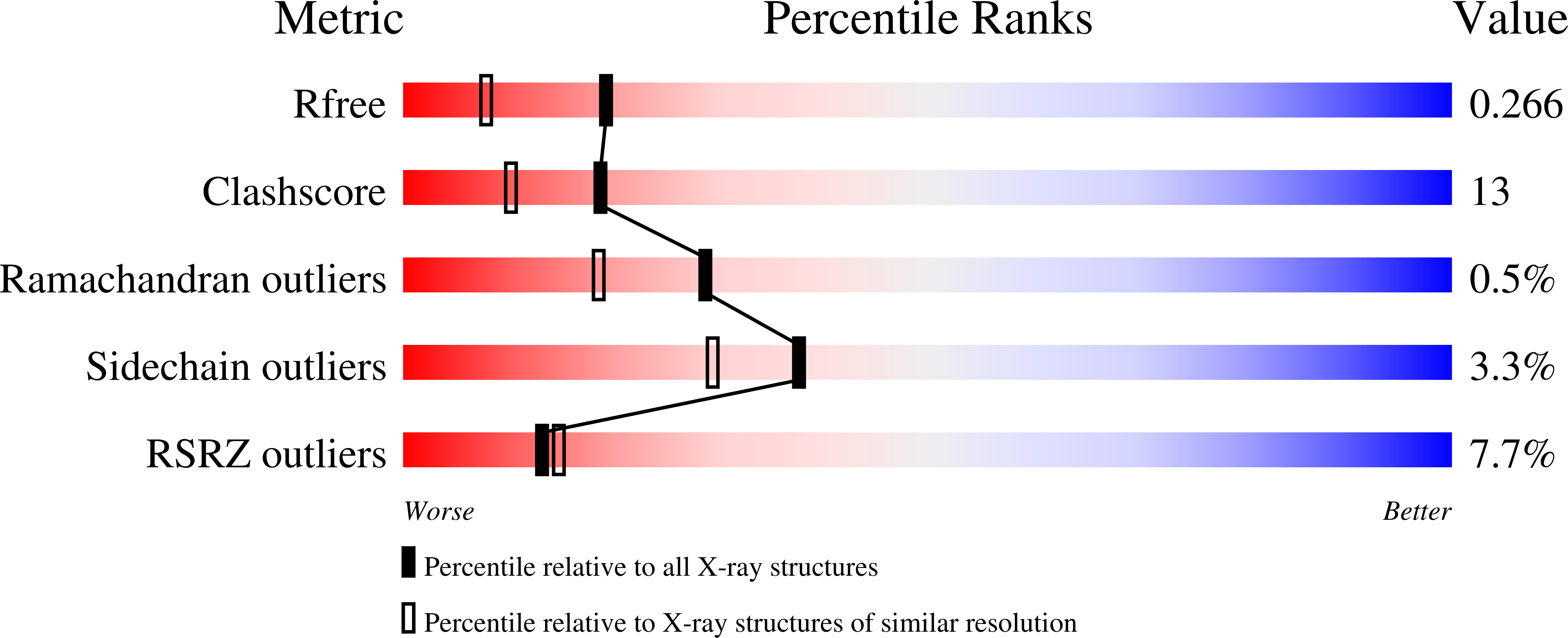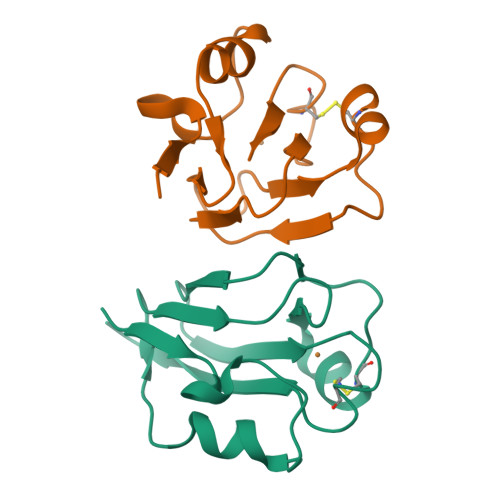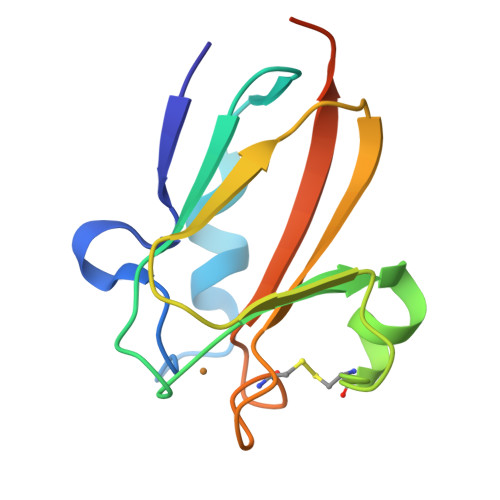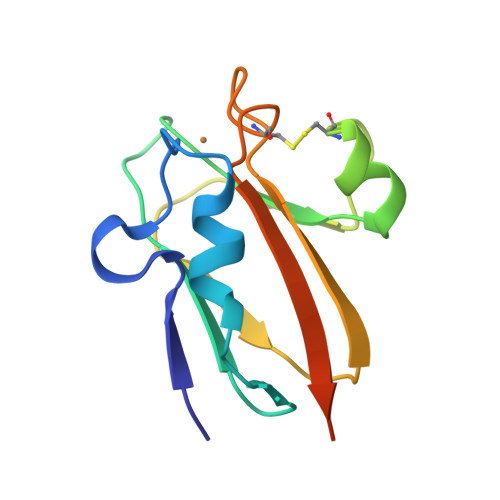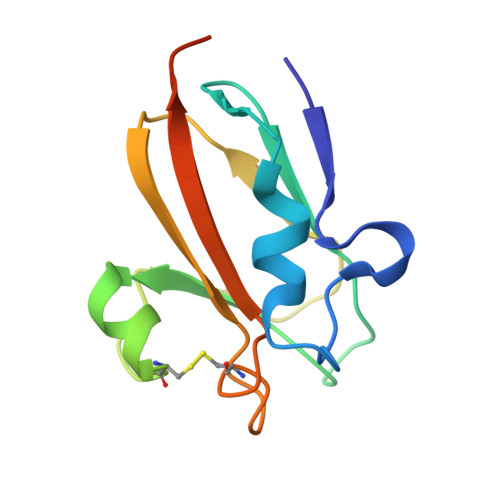Crystal Structures of Oxidized and Reduced Stellacyanin from Horseradish Roots
Koch, M., Velarde, M., Harrison, M.D., Echt, S., Fischer, M., Messerschmidt, A., Dennison, C.(2005) J Am Chem Soc 127: 158-166
- PubMed: 15631465
- DOI: https://doi.org/10.1021/ja046184p
- Primary Citation of Related Structures:
1X9R, 1X9U - PubMed Abstract:
Umecyanin (UMC) is a type 1 copper-containing protein which originates from horseradish roots and belongs to the stellacyanin subclass of the phytocyanins, a ubiquitous family of plant cupredoxins. The crystal structures of Cu(II) and Cu(I) UMC have been determined at 1.9 and 1.8 A, respectively. The protein has an overall fold similar to those of other phytocyanins. At the active site the cupric ion is coordinated by the N(delta1) atoms of His44 and His90, the S(gamma) of Cys85, and the O(epsilon)(1) of Gln95 in a distorted tetrahedral geometry. Both His ligands are solvent exposed and are surrounded by nonpolar and polar side chains on the protein surface. Thus, UMC does not possess a distinct hydrophobic patch close to the active site in contrast to almost all other cupredoxins. UMC has a large surface acidic patch situated approximately 10-30 A from the active site. The structure of Cu(I) UMC is the first determined for a reduced phytocyanin and demonstrates that the coordination environment of the cuprous ion is more trigonal pyramidal. This subtle change in geometry is primarily due to the Cu-N(delta1)(His44) and Cu-O(epsilon1)(Gln95) bond lengths increasing from 2.0 and 2.3 A in Cu(II) UMC to 2.2 and 2.5 A, respectively, in the reduced form, as a consequence of slight rotations of the His44 and Gln95 side chains. The limited structural changes upon redox interconversion at the active site of this stellacyanin are analogous to those observed in a typical type 1 copper site with an axial Met ligand and along with its surface features suggest a role for UMC in interprotein electron transfer.
Organizational Affiliation:
Abteilung Strukturforschung, Max-Planck-Institut für Biochemie, Am Klopferspitz 18, D-82152 Martinsried, Germany.







